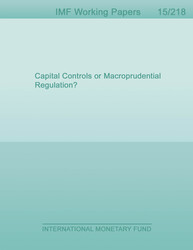
Capital Controls or Macroprudential Regulation?
International capital flows can create significant financial instability in emerging economies because of pecuniary externalities associated with exchange rate movements. Does this make it optimal to impose capital controls or should policymakers rely on domestic macroprudential regulation? This paper presents a tractable model to show that it is desirable to employ both types of instruments: Macroprudential regulation reduces overborrowing, while capital controls increase the aggregate net worth of the economy as a whole by also stimulating savings. The two policy measures should be set higher the greater an economy's debt burden and the higher domestic inequality. In our baseline calibration based on the East Asian crisis countries, we find optimal capital controls and macroprudential regulation in the magnitude of 2 percent. In advanced countries where the risk of sharp exchange rate depreciations is more limited, the role for capital controls subsides. However, macroprudential regulation remains essential to mitigate booms and busts in asset prices.
Publication date: October 2015
ISBN: 9781513506463
$18.00
Add to Cart by clicking price of the language and format you'd like to purchase
Available Languages and Formats
| English |
Prices in red indicate formats that are not yet available but are forthcoming.
Topics covered in this book
This title contains information about the following subjects.
Click on a subject if you would like to see other titles with the same subjects.
Economics- Macroeconomics , Economics / General , International - Economics , pecuniary externalities , macroprudential regulation , inequality , exchange rate , exchange , lenders , borrowers , markets , International Lending and Debt Problems , Open Economy Macroeconomics , Financial Markets and the Macroeconomy , inequality
Summary
Copyright © 2010 - 2024
Powered by:
AIDC



